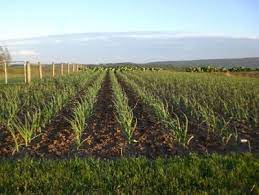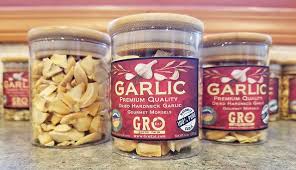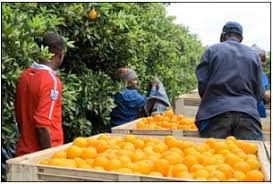


Many opportunities to start a successful and profitable poultry business exist as long as you start in the right way. How do you start? It is very important to decide upfront which sector of the industry you want to serve.
The following options are available to suitable farmers:-
Option 1: You can hatch and sell day-old chicks to big producers. You will then only be involved at the first stage of the process and not concerned with the growing of the chicks at all.
Option 2: You can buy day-old chicks and grow them, and then selling them as fully grown chickens.
Option 3: You can become involved in the entire process, including slaughtering.
Option 4: You can build, manage and maintain your own affordable household egg production unit on a small scale. Later on you can increase the size of your unit in order to sell eggs in the community, if the demand for eggs is big enough. Eggs provide a valuable yet affordable source of high quality protein and vitamins required for normal growth, especially for children, when meat is too expensive or unavailable. If you want to start a successful poultry business (small or big) and even if you need money for funding your project or not, the best way is to put all your ideas/plans in a well-structured and bankable farming business plan that any investor can look at. We can help you with this.
Over the next decade the growth in the consumption of chicken meat is projected to outpace the growth for all other types of meat, mainly due to its competitive price related to other proteins. With an increase of 47% (compared to 84% over the period 2002 – 2012) over the next decade the total consumption of chicken meat is projected to reach almost 2.56 million tons by 2022. This implies that the per capita consumption of chicken meat will exceed 48kg by 2022.
WHAT REGULATIONS TO COMPLY WITH
A start-up poultry business must comply with health regulations but does not require a permit or license to start a poultry production business. These differ from area to area, and you should check regulations with the local authority or associations in your area.
OTHER REGULATIONS:-
Abattoirs for broilers. As the establishment of an abattoir is expensive and complicated to install, it is best for new members to market and sell their broiler chickens live.
Transport Regulations. If you wish to transport slaughtered poultry, you should obtain and study the “Meat Safety Act” No. 40 of 2000 for all the rules. All other regulations including these will be found under the General Regulation of the Public Health Act, 1919.
Animal Welfare. It is essential to ensure that birds are well tended to, that cages are not overloaded and high health standards are maintained. A shower and a disinfectant foot bath is a must before anyone is allowed to enter a broiler house.
Halaal and Kosher Certification. To obtain certification to sell Halaal and Kosher poultry products, your business has to have official certification from the Beth Din (Kosher) and the South African National Halaal Association to produce and sell products for Kosher and Halaal use. Businesses that produce for these religious entities are evaluated and inspected and audits take place regularly.
THE EGG INDUSTRY
The Egg Industry comprises of 3 distinct sectors:-
- Day old chick production;
- Layer replacement hen production;
- Egg production.
Some large companies are integrated and involved in all 3 sectors.
Egg Production Process
Production begins with the breeder stock, at the “fertile egg production facilities” . Good quality eggs are sent to the hatchery for incubation. Those eggs that are not good are sold as by-product to consumers or entrepreneurs. The fertile eggs will produce day-old pullets that will be reared at the rearing facilities until they are ready for laying. At the egg laying facility, the pullets will produce eggs that will be packaged and sold to consumers or be sent for processing.
The Marketing Process
The following tasks are involved in the marketing of eggs:-
- Collection of shell eggs from farms;
- Transportation to a grading or packing plant;
- Grading and standardizing of eggs;
- Processing and packaging into useful forms that are stable and convenient;
- Provision of storage facilities;
- Movement of eggs through wholesale and retail channels;
- Final delivery of products to consumers at a convenient place and time.
Get funding for your poultry farm
Setting up a poultry farm requires a lot of money, as poultry farming requires an expanse of land a hectare or more wide. You would also have to procure a large herd of chickens that are more than hundreds in number in order to generate the proper returns in income. Fortunately, you can avail yourself of loans that are offered to those that are starting or even those that are already in business. The loans can be used to cover aspects of the business like:-
- Buying the land to farm on;
- Start-up costs for the farm;
- Construction expenses;
- Animal feeds;
- Vehicles or Trucks;
- Operational expenses that need to be paid urgently;
It is also easy to apply for these loans, as long as you can provide the investors with a well-structured and professional farming business plan. Some investors will also offer you advice from experts in the poultry business, aside from the monetary aid that you will be getting.
Getting your Poultry Farm Compliant
Another important preparation is to comply with regulations. If you plan on engaging in free range farming, then you have to make sure that the operations of your farm and the treatment of your chickens comply with regulations that are formulated for businesses like yours. Check with your local government agencies regulating laws and regulations promulgated for poultry farms.
Adequate Medical coverage for your chickens
Chickens are just like your children and other animals. To ensure continuous production of chicken and eggs, your chickens should be regularly checked by veterinarians to ensure their health. Sick chickens will negatively affect your production, so it is important to have adequate medical coverage for your poultry animals.
SOME QUESTIONS:-
- How much floor space will be required per chicken? – It depends on the chicken type. 3 sq feet needed for light chicken and 4 sq feet required for general purpose chicken.
- How many types of chicken sheds are used these days? – Most popular ones are the cage sheds and floor sheds.
- What is the shed area required for 10 000 birds? – A 30 000 sq feet house is needed for 10 000 chickens. If you prefer a cage type shed then the built up area should be 4000 sq feet depending on the type of cage you use in your poultry farm.
HELP WITH A FARMING PLAN IS JUST A CALL AWAY – 084 583 3143 or email: money@global.co.za

























